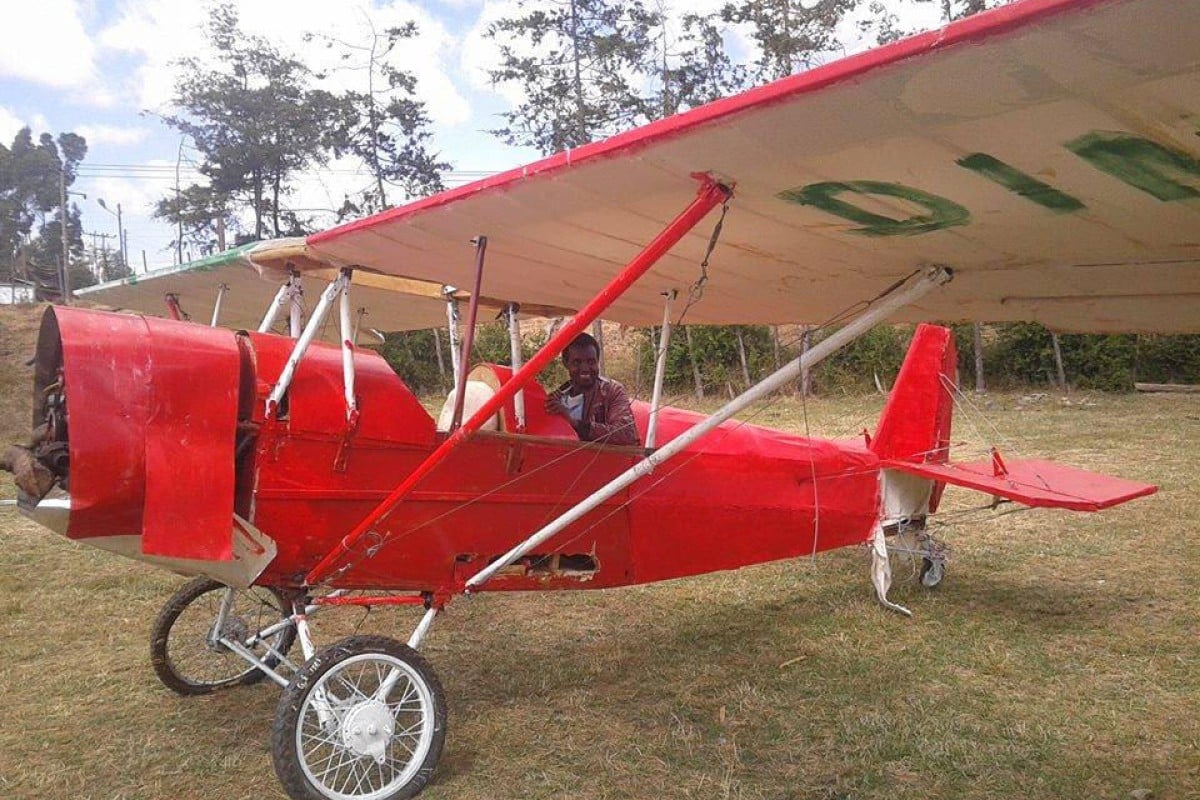
Too short to become a pilot? Build your own plane, like this man
Asmelash Zeferu built his own plane after being told he was too short to become a pilot
 Asmelash Zeferu in his homemade plane.
Asmelash Zeferu in his homemade plane.Ever since he was a little boy, Asmelash Zeferu dreamed of becoming a pilot. There was just one problem: he needed to be one centimetre taller.
"I couldn't be a pilot in Ethiopia 15 years ago because I was too short," Zeferu, now 35, says.
"The Ethiopian Airlines Aviation Academy states you must measure 1.70 metres or taller to be a pilot. And I was only 1.69 metres."
Zeferu wasn't going to let this setback get in the way of his childhood dream. "That's when I decided to build my own aeroplane," he told Young Post.
It sounds impossible, but he has done it all on his own, using second-hand parts, aviation eBooks and YouTube tutorials.
With an engine and propellers, it works just like a normal plane. The bulk of it is made from spare parts found in Merkato, Africa's largest market, in Ethiopia's capital city of Addis Ababa.
It might sound like an unsafe machine, but Zeferu's not living in a fantasy world. He excelled at secondary school, was awarded a degree in public health from Alemaya (now Haramaya) University, in Ethiopia, and took some civil engineering courses.
He carried out extensive research online, and read countless aviation manuals. It's safe to say Zeferu knows what he is talking about.
Zeferu, who will pilot the one-passenger plane himself, is aiming to fly 10 metres above ground. This relatively low height is wise: his plane can reach a maximum speed of 145 kilometres per hour, but doesn't have the same safety fittings as a typical aircraft. In fact, it doesn't have any kind of emergency features.
"I don't have any safety measures. I've only got a motorbike helmet," he says.
The amateur engineer is convinced his own self-belief will help lift the plane off the ground on its maiden flight on Saturday, and he urges students struggling to make their dreams a reality to adopt the same attitude. "Students have to set a goal for their career. They need to be committed to achieving their dreams," he says.
"They should be persistent, patient, and spend time working towards their goal, expanding their knowledge, and watching out for opportunities. They also need to figure out what their talents are and try to explore how to develop them in low-cost, easy ways."
Low-cost can be difficult, especially when you're trying to build an aeroplane. By using old parts, Zeferu has kept his costs relatively low, spending a total of 16,000 Ethiopian birr (HK$5,900). He saved up while working as the head of a nursing college until last year, when he quit his job to work full-time on his plane.
Zeferu's journey is a lesson in perseverance. It took him 570 days to build his plane, and he faced failure and disaster along the way.
"On June 11 this year, I tried to fly my K-570A aircraft," he explains.
"Unfortunately, the propeller shattered and within a few seconds it broke off."
He instantly knew what the problem was: friction from parts rubbing together caused the propeller to become detached But he was not disheartened, and approached his project with renewed enthusiasm. He was confident that his mistakes would lead to success.
He quotes inventor Thomas Edison: "I have not failed; I have just found 10,000 ways that will not work."
This positive attitude is infectious. As his project and story gather media attention around the world, well-known organisations have stepped in to help, including the NVAV Dutch Experimental Aircraft Associations.
He has been offered a scholarship to study aeronautical engineering at Inholland University of Applied Sciences in the Netherlands. But he really wants to study in Hong Kong.
"I would love to study aeronautical engineering at Hong Kong University of Science and Technology [HKUST]," he says.
"China is the world's fastest-growing country. I want to learn aircraft maintenance at a Beijing or Hong Kong university."
Professor Christopher Chao, head of the department of mechanical and aerospace engineering at HKUST, admires Zeferu's ambition. "I think he is great, and this is something we should encourage Hong Kong students to do."
So does building your own plane help secure a place at HKUST?
"It certainly helps enhance his chances," says Chao. "We also need to look at other credentials so a detailed review of his background is needed."
If Zeferu's flight is a success, it takes what can be achieved with the internet to whole new heights.